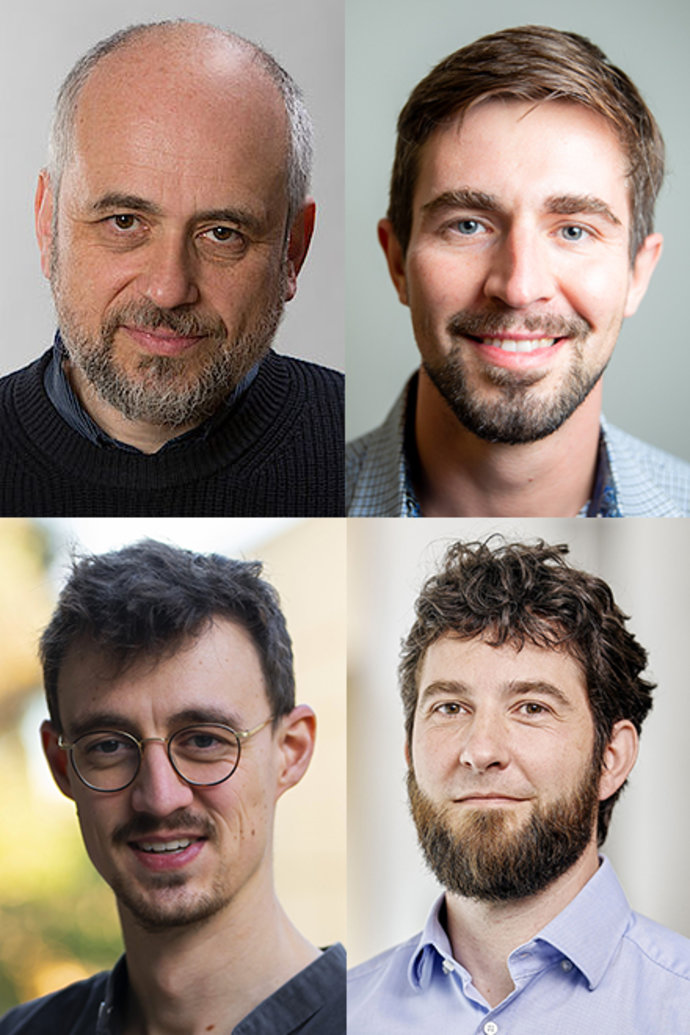
The GSI Helmholtzzentrum für Schwerionenforschung and the future accelerator center FAIR, currently under construction at GSI in Darmstadt, took part in the international innovation conference "Curious - Future Inside Conference" with a wide range of information and future perspectives. The interdisciplinary event took place from July 10 to 11 in the Rheingoldhalle in Mainz and attracted numerous renowned educational institutions, research facilities and technology companies from Germany and…

The demands on the main power supplies of the future FAIR ring accelerator SIS100 are extremely high. During the acceleration cycle, the rotation of the main magnet must be guided with the greatest precision. Four high-performance power supplies are required to operate the SIS100's bending and focusing magnets. These primary power supplies have a total pulse power of 30 Mega-Watt and are directly connected to the medium voltage network (20,000 Volt). The dipole magnets are supplied with currents…

The employees of GSI and FAIR mourn the loss of their former division head Prof. Dr. Dr. h.c. mult. Peter Armbruster (* 25.7.1931, † 26.6.2024), who passed away at the age of 92. Peter Armbruster created and achieved groundbreaking research in his long and fulfilling life. This applies in particular to his achievements for and at GSI, where he was a leading scientist and a longstanding member of the Scientific Directorate from 1971 to 1996.

The HElmholtz LInear ACcelerator HELIAC is a continuous-wave linear accelerator at GSI/FAIR that opens up new research opportunities with its continuous particle beam. The first superconducting module for HELIAC has been developed, assembled and tested at the Helmholtz Institute Mainz (HIM) in the past years. Following transport to the GSI/FAIR campus, it has now been successfully commissioned with a beam of helium and argon ions. In further tests, the electrical field strengths required to…

Professor Joachim Stroth (GSI and Institut für Kernphysik, Goethe-Universität) and Dr. Pavel Tlusty (Nuclear Physics Institute, The Czech Academy of Sciences) have been elected as the HADES Spokesperson and Deputy Spokesperson for the next term of three years. HADES is an international collaboration involving almost 150 scientists from Germany, Czech Republic, Poland, France, Sweden, Portugal, and Cyprus.

Two research topics of GSI/FAIR have made finalist in the Falling Walls Science Breakthroughs for 2024 in the “Physical Science” category: Professor Dmitry Budker and his team from the Helmholtz Institute Mainz (HIM) and Dr. Jan Rothhardt from the Helmholtz Institute Jena (HI Jena) – both branches of GSI Helmholtzzentrums für Schwerionenforschung at Johannes Gutenberg University of Mainz and Friedrich Schiller University Jena – were selected for this next round. The Falling Walls Science Summit,…

Since 2018, the progress of the FAIR construction site has been documented by drone videos. A new compilation shows the development from 2018 to 2024 - starting with excavation and civil engineering up to the start of the technical building equipment. Thanks to the award-winning filming technique, a Longterm Dronelapse is created in which the individually filmed time-lapse videos are precisely superimposed and combined into a single video.

Following successful recertification, GSI/FAIR's high-performance data center Green IT Cube continues to bear the Blue Angel, the German government's eco-label. Thanks to a special cooling system, the data center is particularly energy-efficient and conserves resources. The conditions for the Blue Angel are reviewed and revised at regular intervals. In order to retain the seal, the Green IT Cube has been adapted to the new criteria.

It is with great grief that we bid farewell to Professor Reinhard Kulessa, Jagiellonian University, Krakow, a great colleague who passed away on 13 June this year. Born in 1940 he dedicated his life to nuclear physics as scientist and academic teacher. Already in 1979, he started to work at GSI in the group of Professor Dirk Schwalm, making tremendous contributions to understanding of nuclear structure with studies at UNILAC. Later he contributed to the success of the KAOS, HADES and LAND ...














